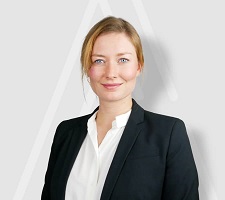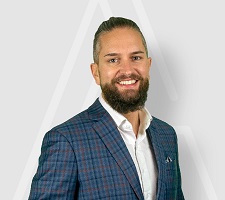Improving team communication with LEGO Serious Play
“We’ve been working together for 10 years, but this is the first time I’ve heard this story!”
Or even: “I had never thought of it that way, why have you never pointed it out to me?” – “Well, I’ve never been asked about it before either.”
Workshops with exactly such “aha or wow moments” are made possible by the LEGO Serious Play method.
How can a toy from childhood days help to suddenly bring long-hidden information to light? Can your team improve its cooperation and communication with the method? Come with us on a short journey through the almost magical world of LEGO Serious Play (LSP) and let us answer these and other questions.
Preparation of a LEGO Serious Play workshop
A decisive factor for the success of any LSP workshop is comprehensive preparation. No two workshops are the same and the questions need to be individually tailored to the objectives. So don’t set too many goals, but focus on a few core areas. Whether you want to challenge your organisational structures, address team communication, bring the corporate vision to life or solve important strategic issues in a participatory way – all this is possible with Lego Serious Play.
The skill-building phase
At the beginning of every LSP workshop there is always a so-called skill-building phase. This ensures that all participants, regardless of their own previous experience, get a feel for the popular clamping modules. With the help of a warm-up, the distance to the working material is playfully reduced. Especially if the participants have never heard of LEGO Serious Play before, they often say things like “Oh, that’s nice, we’ll play with LEGO today” or “If the management finds out that we get paid for playing LEGO”.
It is precisely this classification of LEGO as a toy that plays into the hands of the workshop leader, the so-called LSP facilitator. Especially at the beginning, few competences are attributed to the medium LEGO: it seems harmless and for some it belongs more to the children’s room than to the meeting room.
The skill-building phase is not only about introducing the participants to the possibilities of LSP, but also about establishing “thinking with your hands”. With some tasks, you don’t really know how to find a solution built with LEGO. Surprisingly, our subconscious often knows the answer. Accordingly, the rule is: “Just build on it”. By skilfully interspersing metaphors on the part of the LSP facilitator, it is additionally made easier for the participants to present and describe even more complex thought processes.
Already at the end of the skill-building phase, the first moments of surprise are guaranteed in the circle of participants. Through the LSP basic rule “Everyone builds, everyone explains”, we also ensure genuine 100% participation in the workshop. There is no silent approval of a task! The models built for each task are presented and explained by each participant at the end of the exercise.
The exchange phase
The skill-building phase makes it clear to the participants how different solutions to identical tasks can turn out. It becomes apparent that each participant approaches and interprets tasks differently and therefore the solution variance is very broad. As absurd as some solutions may seem at first glance, there are no wrong answers in LEGO Serious Play. The fact that already in the first phase qualities like listening, empathy or even questioning work results instead of questioning people are continuously promoted can help teams to improve their communication.
Moreover, it is precisely this approach that encourages participants in the second phase to approach complex questions with curiosity and creativity. Depending on the objective, one question could be: “How do you ensure ideal processes in the department in your role?”
In the second phase, the main task of the LSP facilitator is to stimulate the exchange between participants through targeted questions. Depending on the team composition, questions about the individual models already arise very actively from the group of participants.
The reflection phase
An extensive reflection phase ensures mutual understanding and at the same time prepares the ground for the construction of a common model. This can then consist of the most important elements of the individual models and, for example, depict the ideal work processes of the department including the roles of all team members.
Combining the individual solutions into team solutions requires concentration, empathy and a willingness to compromise on the part of the team. As it can quickly become complex and challenging for the participants at this point, the facilitator needs to be particularly sensitive and able to steer the process.
Together, the participants identify and discuss similarities and differences in their solutions at this stage. In the process of assembling, it is common for new ideas to emerge through the exchange. The basic rule here is: “construction beats discussion”. All ideas should also be implemented structurally by the team in order to make synergy effects, conflicts, relationships or processes transparent for all participants. Through, in the truest sense of the word, constructive exchange, a common understanding of the task to be solved develops in the team. Misunderstandings, ambiguities or even solo efforts by individual participants are practically excluded.
Lessons learned
It is particularly noteworthy that working in several LSP cycles ensures that individual participants remember details of their colleagues’ presentations much more accurately than is the case in conventional workshops. LEGO Serious Play addresses different areas of our perception in communication. Both the areas of visual and auditory perception as well as the kinaesthetic area and, when documenting the results, reading or writing are active in LSP.
The construction of team models or even more complex system models, which represent influencing factors on a team model, is only possible through the intensive exchange of the participants. At the latest at the time of the discussion and presentation of the joint model, the participants themselves are often surprised at what complex and meaningful constructions they have created step by step.
At this point, it is all the more important to carefully secure the results. In practice, this ranges from flipcharts to photo or video documentation to the reproduction of the models. Therefore, the facilitator must plan the documentation well in advance to ensure that it is possible to continue working with the results afterwards. At this point, the facilitator’s main task is to support the participants in focusing on core elements of their presentation and deriving action points.
The nature of a LEGO Serious Play workshop is the intensive exchange among each other. This exchange almost always creates a mixture of feelings of exhaustion and enthusiasm among the participants. From feedback discussions with clients, we know that participants regularly share their enthusiasm about the results and the approach with their colleagues. And this is a good sign of improved team communication.
Notes:
The Agile Heroes are seeing the Lego Serious Play method become more widespread across organisations and industries. To meet this demand, they offer certified facilitator training in the Lego Serious Play method in addition to the tried and tested LSP in-house workshops, so that organisations can fully exploit the potential of LEGO Serious Play.
You can find out more about what the Agile Heroes have to offer at https://www.agile-heroes.com/de/trainings/lego-serious-play-facilitator-ausbildung/.

Tanja Tissen
Tanja Tissen is a certified Lego Serious Play trainer and Scrum Master at Agile Heroes in Frankfurt am Main. She advises and supports international clients from consulting, aviation and banking solutions in their agile transformation. Tanja studied economics and computer science in Münster and Moscow.

Julian Andre Fuchs
Julian Andre Fuchs, a trained office communications specialist and business administration graduate, works as an Agile Coach and Scrum Master at Agile Heroes. Through years of experience as an independent entrepreneur and manager in various industries, he has extensive knowledge of team dynamics, communication and project management. In addition to his work as a trainer and consultant, he is the company’s product owner for LEGO Serious Play. In this role, he supports clients in conducting individual workshops, training their own facilitators and optimising teamwork.